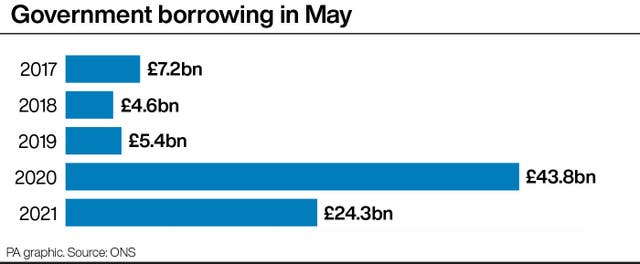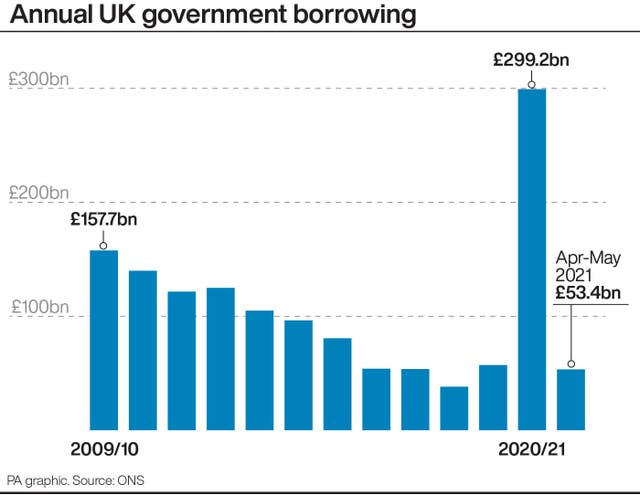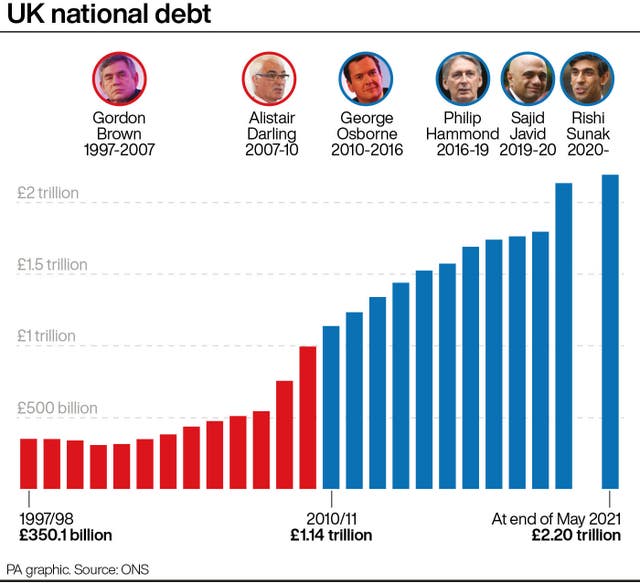
Nick Ferrari 7am - 10am
22 June 2021, 10:34

The ONS said government borrowing stood at £24.3 billion in May, down from £43.8 billion a year earlier at the height of the pandemic.
Government borrowing eased back in May as the lifting of lockdown restrictions spurred on Britain’s economic recovery and drove tax revenues higher, according to official figures.
The Office for National Statistics (ONS) said government borrowing stood at £24.3 billion in May, down from £43.8 billion a year earlier at the height of the pandemic.
Central government receipts rose £7.5 billion year-on-year to £56.9 billion as restrictions eased further last month, with indoor hospitality reopened on May 17, providing a boost to the economy.
Government spending in May fell £10.9 billion to £81.8 billion, the figures showed.

But the ONS said that despite the year-on-year fall, it was still the second highest May borrowing on record and £18.9 billion more than in May 2019 before the pandemic struck.
The ONS revised down borrowing for the financial year to the end of March by £1.1 billion to £299.2 billion, though this was still the highest since the end of the Second World War and equivalent to 14.3% of UK gross domestic product (GDP).
The Government also revised down its estimate for April borrowing to £29.1 billion from £31.7 billion previously.
The amount of Government debt now sits at £2.2 trillion at the end of May, or around 99.2% of GDP, the highest ratio since the 99.5% recorded in March 1962.

Chancellor Rishi Sunak reiterated his pledge to “get the public finances on a sustainable footing”.
“That’s why at the Budget in March I set out the difficult but necessary steps we are taking to keep debt under control in the years to come,” he added.
The Government has unleashed a massive support package to help households and businesses through the pandemic, with measures totalling some £350 billion since the start of the crisis last March.
This has sent Government day-to-day spending soaring by £204.2 billion to £942.6 billion.

But the economy is rebounding at an impressive rate since lockdown restrictions have begun to lift, which is set to help Mr Sunak in his efforts to bring eye-watering UK debt levels back down.
Samuel Tombs, chief UK economist at Pantheon Macroeconomics, said borrowing is on track to hit £185 billion in 2021-22 – £49 billion less than forecast by fiscal watchdog the Office for Budget Responsibility (OBR).
But he cautioned: “The OBR’s judgment in March of a 3% long-term hit to GDP from Covid-19 is about right, given the unprecedented exodus of foreign workers last year, the impending shake-out in the labour market when the furlough scheme ends and the huge collapse in capital expenditure.
“Accordingly, we still think that the Government will have to stick to plans to hike corporation tax in 2023 and to increase the effective income tax rate by freezing existing thresholds, if it wants to ensure that public borrowing declines below 4% of GDP in the mid-2020s.”